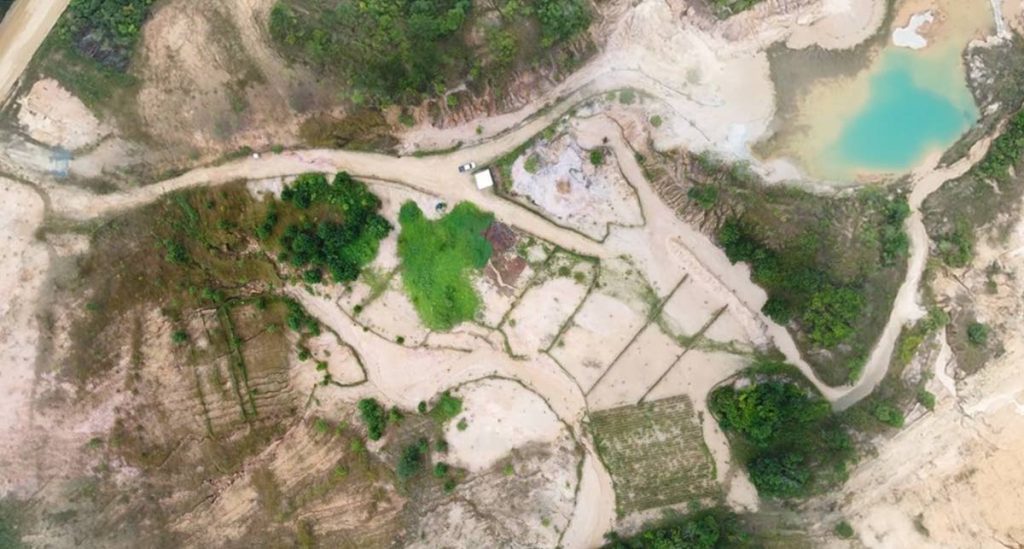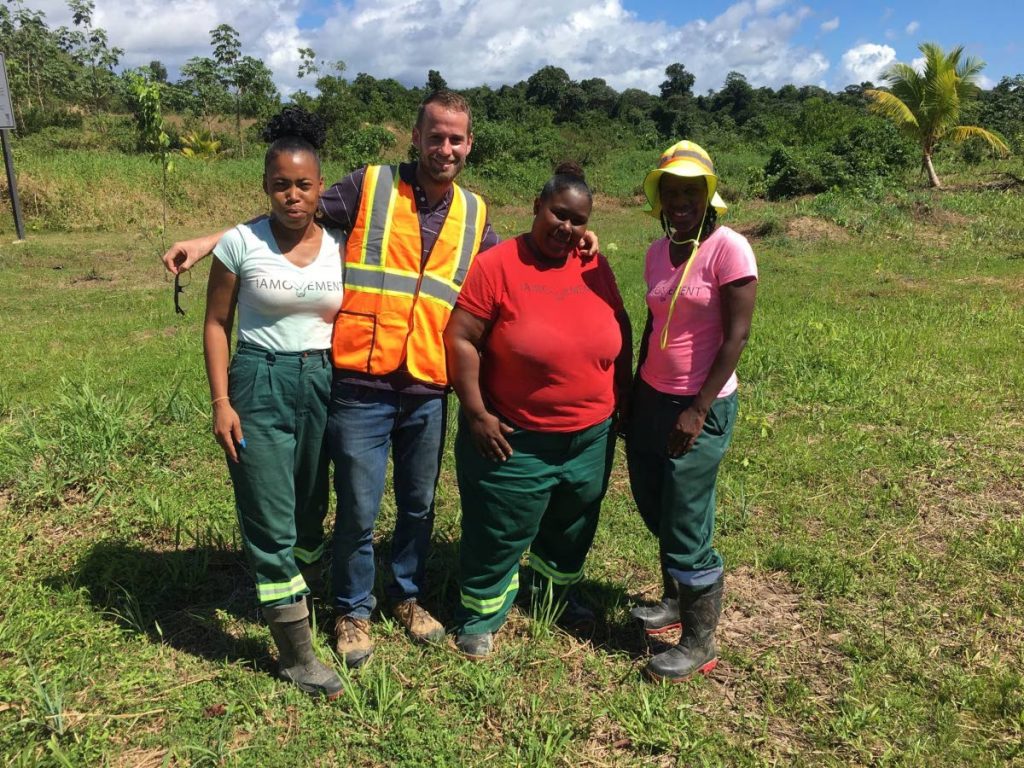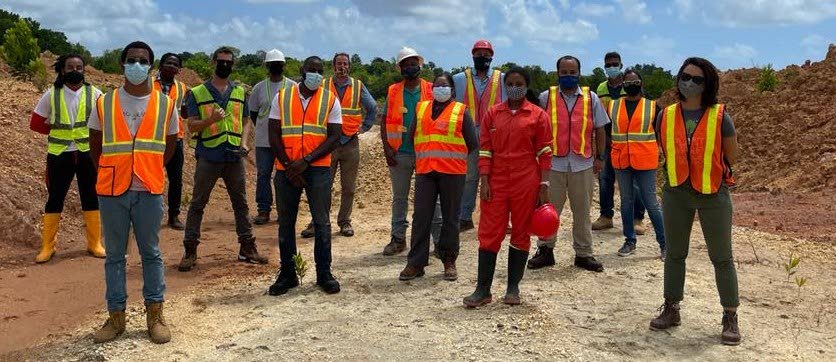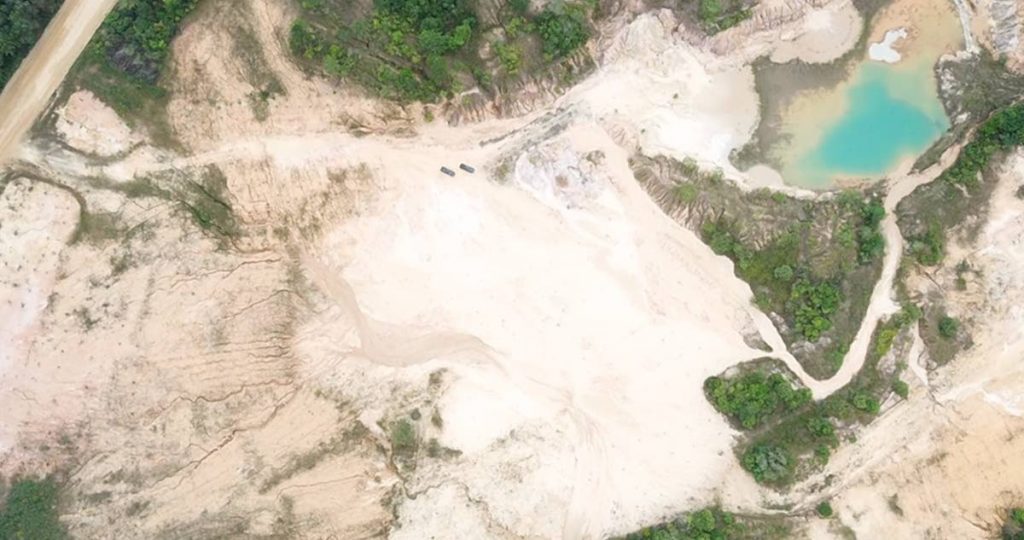Regeneration movement rehabs degraded quarries

Civil engineer Jonathan Barcant talks about the partnerships needed to restore natural environments. Life-changing experiences while working in extractive industries brought him to a quest for green engineering solutions. Now, he is part of a growing army of champions for the restoration of nature. He talks with Anjani Ganase.
How did you get into this field?
I am a civil engineer, specialised in soils, water and environment. After leaving university, I took a job with a large engineering company in Canada, where the main projects I worked on were in the mining industry. Within a couple years, I realised that my work was contributing to degradation and loss. I found myself desperately searching for green engineering solutions. This lead me to vetiver grass and the Vetiver System (VS) as a very unique green infrastructure approach.
My company Vetiver TT Ecological Engineering Solutions Ltd specialises in the use of vetiver grass which can create livelihood opportunities for communities: from planting to making craft and specialty products. It completely captured me, and I became obsessed with it for a long time.
This eventually landed me in a large mining project in Panama in 2012, the construction of the second largest copper mine in the world, in the middle of the rainforest. I’d pushed to get there to promote vetiver grass as a regenerative solution. While I learned a lot and fell in love with the country, the destruction I saw first-hand in that project was more than I could bear. This drove me to shift my attention towards environmental and climate action, and land restoration. So after about seven years of doing this through my company Vetiver TT and the NGO IAMovement, I find myself in a position where I think I can contribute positively.
What is IAMovement?
IAMovement is a non-profit organisation founded in 2014 by a group of young professionals with the goal of effecting positive social and environmental change in Trinidad and Tobago. Since then, IAMovement has become one of the leading civil society organisations driving action on climate in TT through advocacy, education and awareness, and working with communities on the ground.

Our projects and activities to date have focused in two areas – climate mitigation, driving education and awareness on energy efficiency and renewables in a local context; and climate adaptation – using the VS and Vetiver Education and Empowerment Project (VEEP) model to build resilience in rural communities.
Can you share more about the current work IAMovement is doing with quarry rehabilitation?
The IWEco TT Rehabilitation of Quarries project in the Sangre Grande area has been an opportunity for a partnership involving NGOs, government, international agencies and private sector business, and communities. IAMovement partnered with the NGO Trust for Sustainable Livelihoods (Sustrust), with support from IWEco and GEF SGP UNDP, to rehabilitate acreages of quarried lands. (The Integrating Water, Land and Ecosystems Management in Caribbean Small Island Developing States (IWEco Project) is a five-year, regional project that builds upon the work of previous initiatives, to address water, land and biodiversity resource management as well as climate change.)

In TT, the Environmental Management Authority is the local implementing agency for IWEco which is funded by the Global Environment Facility and implemented by the UN Environment Programme. Between 2018-2020 rehabilitation activities were undertaken at sites operated by National Quarries Company Limited and Carib Glass. IAMovement received further support from the Inter-American Development Bank (IDB) Lab through their Building on Vetiver! Project. Other partners include Vetiver TT EES Ltd, Sangre Grande Regional Corporation, PSI Services Ltd, SWMCOL and CEPEP.
Is there a longer-term project?
IAMovement and Sustrust’s Phase I (2018-2019) saw approximately ten acres rehabilitated. IAMovement has just signed on with the EMA/IWEco-TT and National Quarries to rehabilitate another ten acres at NQCL Sand and Gravel Site in Sangre Grande. This has been delayed by covid19, but we will begin once public safety regulations permit.
The Ministry of Planning and Development recently announced its intention to rehabilitate 100 hectares of land, which we applaud, as part of its overall targets under the UN Convention to Combat Desertification (UNCCD). IAMovement was part of the consultation process for TT’s UNCCD target setting, where we presented on quarry rehabilitation actions and successes to date under the IWEco-TT project.
Why quarry rehabilitation?
Trinidad has a significant amount of degraded lands especially in the north east, due to intense deforestation for the exploitation of mineral resources (sand and gravel). This is very visible to anyone flying overhead between Trinidad and Tobago. Loss of forest cover has many negative effects, including loss of biodiversity; faster rates of water runoff during rainfall events resulting in greater flooding; less groundwater recharge resulting in depleted aquifers and reduced public water supplies; and hotter temperatures. Rehabilitation would return forest cover and reduce the damages caused by quarrying.

IAMovement did have some experience with certain methods for protecting and repairing degraded lands prior to the project – preventing erosion, preventing slippage and conserving topsoil, using the VS, but we have learned many new things under the current project during the last three years.
One of the most valuable discoveries we made was the win-win opportunity available through the channelling of organic waste away from landfills and to degraded quarry lands. We use tree and leaf cuttings from Sangre Grande Regional Corporation and Cepep; other organic wastes such as spent grain from Carib, vegetable scraps, sargassum seaweed, wood chips and sawdust (from untreated wood). In a short space of time, we saw how these materials could completely rebuild soil and result in vegetation where there was none for years – while also reducing stress on landfills. Instead of methane emissions at landfills, we have carbon sequestration and topsoil regeneration at quarries. We have also deployed over 20,000 vetiver plants at the quarry sites to date to reduce erosion, build back topsoil, and lock carbon and organic matter deep in the ground through the roots which go down to ten feet.
Another key element of quarry rehabilitation is reforestation – using indigenous or other valuable tree species. The Trust for Sustainable Livelihoods (Sustrust) took the lead on these activities under the first phase of the project.
Is a two- or three-year programme enough for rehabilitation?

Rehabilitation to near original forest can take decades, but it is possible to speed that up significantly. Various techniques such as those outlined above, and others which we are continually learning and observing from the international space – including certain permaculture and syntropic farming approaches – can play a huge role. A very valuable first step in rehabilitating degraded quarries is to re-establish an organic soil layer and some form of vegetation. Once this is done, some value is already created, since rainfall is being more effectively captured, erosion is reduced or eliminated, carbon is being sequestered, and the site is becoming more fertile and ready for secondary vegetation to take over. To achieve tree canopies can take 15 years. Advanced techniques are sometimes needed in order to speed things up. There are different stages of quarry rehabilitation; and while we are achieving some levels which are all positive and promising, we are continuing to learn and improve.
Why should communities care about this?
The human element is critical to consider in environmental recovery and development projects, and these approaches in quarry rehabilitation can result in more resilient communities who can benefit from the projects. We are happy that the communities were willing to work with us and to learn. Given the 2015 Minerals Act which now mandates quarries to set aside funds for rehabilitation, community members who have been trained in rehabilitation approaches would be able to earn livelihoods from these types of jobs in the future. Reforested land results in recovered ecosystems and the return of flora and fauna. By including tree species of value such as fruits, communities benefit directly through harvest in years to come. Short term crops can also be integrated into quarry rehabilitation efforts for seasonal food. Lastly, vegetated land reduces rainfall runoff and curbs flooding, promotes ground water recharge, and cools the surroundings.
What is the plan for the next years in terms of locations for rehabilitation?
For now, we are working with sites where quarry operators are willing to partner and work with us under the IWEco project. So far, the two partners are National Quarries in Sangre Grande, and Carib Glass in Matura. Since IAMovement’s current quarry rehabilitation activities are with the IWEco TT project, we are operating within the existing partnerships – but we are exploring opportunities for larger sized projects which may happen at sites outside of these. Sand and gravel quarries are also more feasible to rehabilitate. Rock quarries such as some of those in Santa Cruz and Maracas Valley, are not as straightforward; re-growing vegetation on rock is not easily done.
What is the government's role in this?
One of the goals of the IWEco TT project is to demonstrate that quarry rehabilitation is feasible and to discover and understand some of the best methods to do so. This provides industry and authorities with a model which can be followed – where the successful large scale rehabilitation of quarries in TT will depend on quarry operators’ compliance with the Minerals Act and government’s enforcement of this.


Comments
"Regeneration movement rehabs degraded quarries"